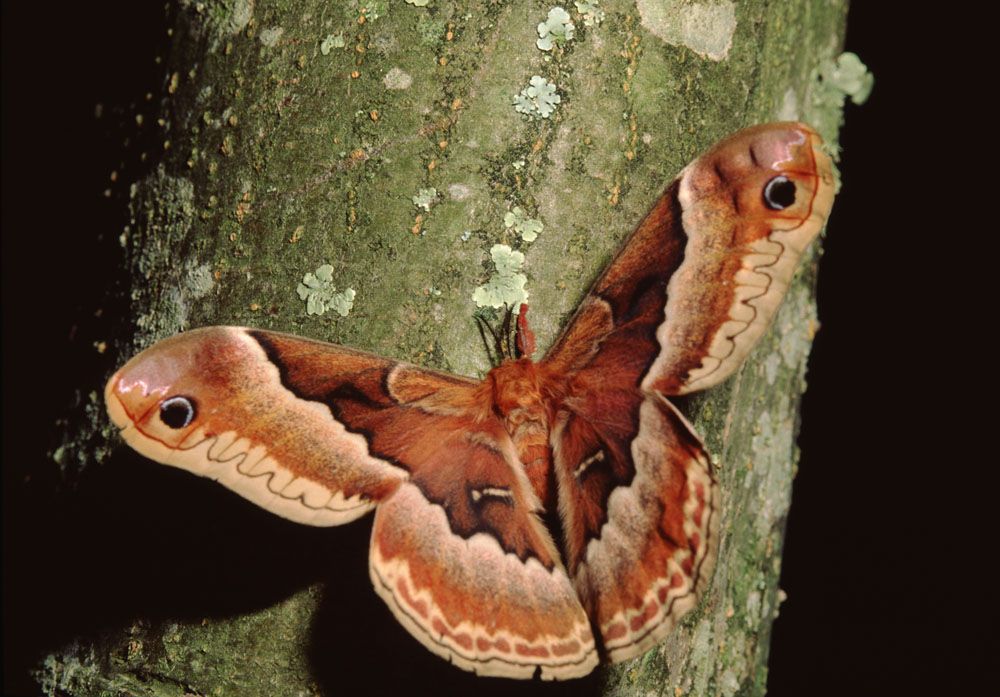
Promethea Moth – Callosamia promethea
Promethea Moth (Callosamia promethea)
Common Name: Promethea Moth
Latin Name: Callosamia promethea
Appearance: The Promethea Moth is a strikingly beautiful species with a wingspan that can reach up to 4 inches (10 cm). The males and females exhibit sexual dimorphism in their appearance.
Male Moth: The male Promethea Moth has predominantly brown wings with distinctive, feathery antennae. The forewings are marked with bold, dark lines and patches.
Female Moth: The female, in contrast, has more subdued, reddish-brown wings with a central eyespot on each hindwing. The antennae are less feathery than those of the male.
Host Plants:
The caterpillars of the Promethea Moth feed on various deciduous trees, including cherry, sweetgum, tulip tree, spicebush, and others.
Territory:
Promethea Moths are found in eastern North America, from southern Canada down to Florida.
Damages caused by Promethea Moth:
The Promethea Moth caterpillar can cause defoliation of its host plants, particularly during the larval stage. However, they are not generally considered serious pests. In natural ecosystems, their feeding can be a part of the ecological balance, and in smaller numbers, they are unlikely to cause significant harm to healthy trees.
Life History and Habits:
Eggs: Female moths lay eggs on the leaves of host plants during the spring.
Larva: The caterpillars hatch from the eggs and go through several moults, feeding on leaves as they grow. They are generally green with distinct markings.
Pupa: When fully grown, the caterpillar spins a silk cocoon and pupates. This stage occurs on the host plant or in the leaf litter.
Adult Moth: After pupation, the adult Promethea Moth emerges from the cocoon. The adults are primarily nocturnal and are known for their distinctive, silk-wrapped cocoons that often remain attached to branches.
